Hypoxia, The Silent Killer

Hypoxia is an environmental phenomenon where the concentration of dissolved oxygen in the water column decreases to a level that can no longer support living aquatic organisms. The level is often considered to be 2 mg O2 per liter of water or lower.1 Hypoxic and anoxic (no oxygen) waters have existed throughout geologic time, but their occurrence in shallow coastal and estuarine areas appears to be increasing as a result of human activities.2
What Causes Hypoxia?
In 2015, scientists determined the Gulf of Mexico dead zone to be 6,474 square miles, which is an area about the size of Connecticut and Rhode Island combined.3 Major events leading to the formation of hypoxia in the Gulf of Mexico include:
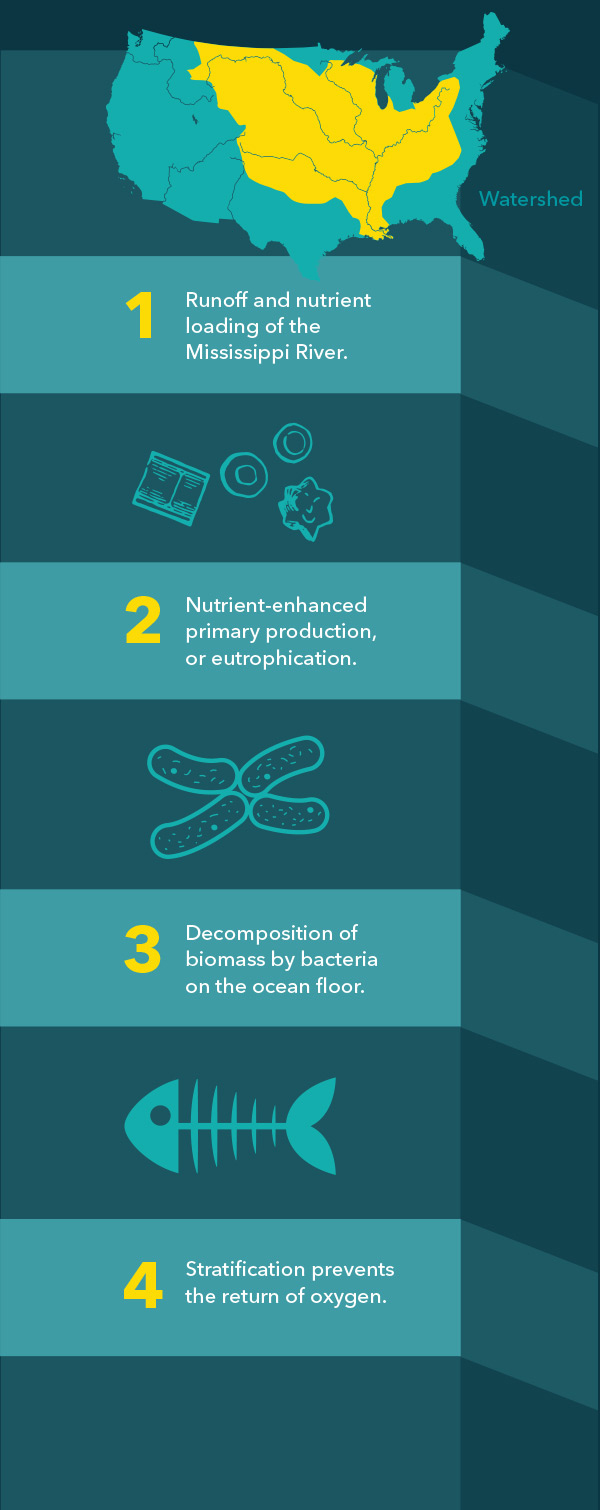
The Process
These four major factors take place up and down the entire water column. The illustration below describes the process, in the end, we are left with mass anoxic areas that are deadly to aquatic life – particularly for primary producers at the bottom of the food web that lacks mobility. Disruption of the fundamental layer of the marine food chain can impact life all the way up to our own.
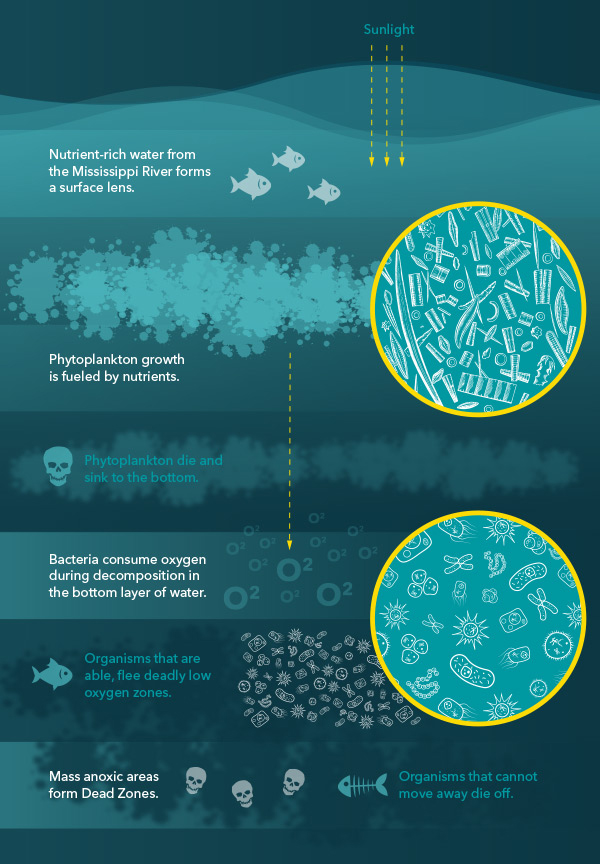
Getting to the Data
Let's look at some important facts surrounding Hypoxic events:
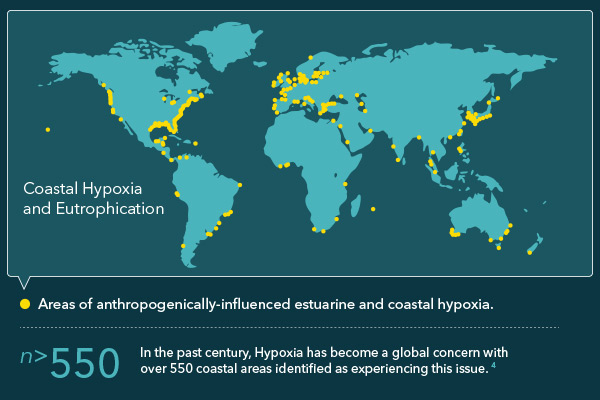
*Not all countries have a robust hypoxia monitoring program.
With more and more hypoxic events happening every year – now more than ever we need a global solution to reverse this trend.
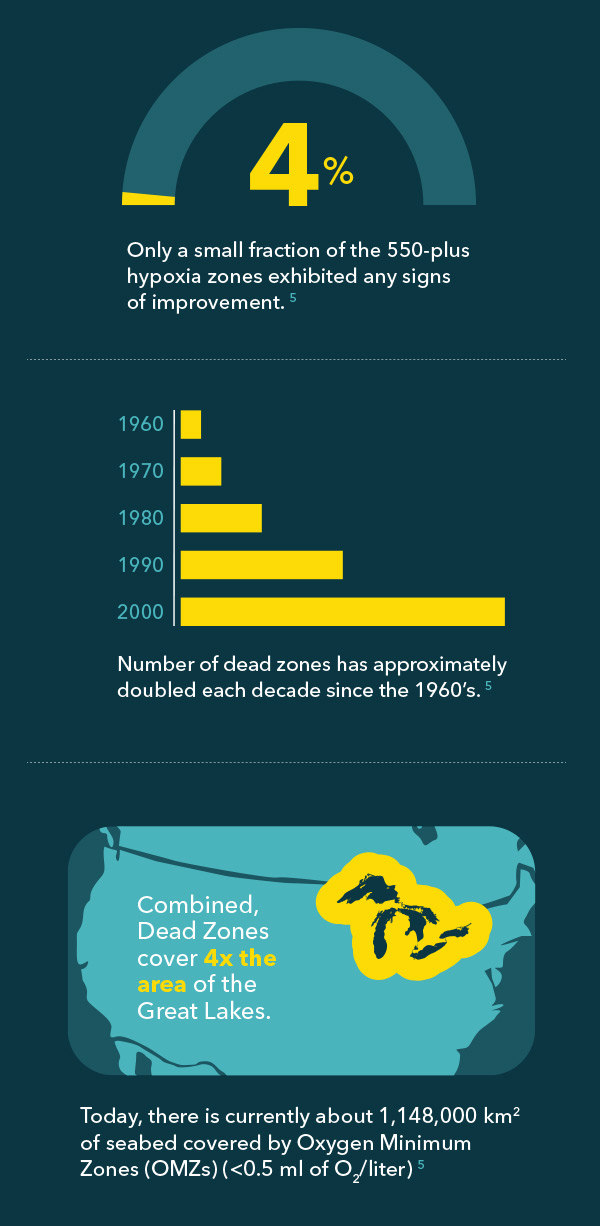
In the US, the US EPA leads a Hypoxia Task Force (HTF) with representatives from the Department of Agriculture, Department of the Interior, Department of Commerce, and the Army Corps of Engineers. State representatives from Arkansas, Illinois, Indiana, Iowa, Kentucky, Louisiana, Minnesota, Mississippi, Missouri, Ohio, Wisconsin, and Tennessee are also part of the solution, as is the National Tribal Water Council.
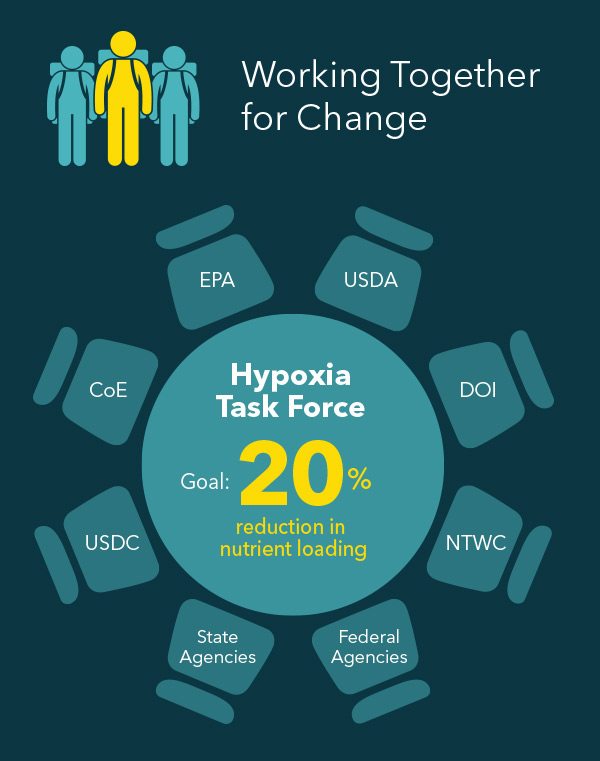
The goal of the task force is to achieve a 20% reduction in nutrient loading in the largest hypoxic zone in North America, the Mississippi Delta by 2025.6
This will require a large-scale, coordinated effort to reduce nutrient runoff throughout US water-bodies, setting monitoring requirements and discharge limits for nitrogen and phosphorus that wash into rivers.6
SOURCES: 1 Vaquer-Sunyer and Duarte, 2008 2 Diaz and Rosenberg, 1995 3 NOAA 4 World Water Resources Institute 5 Diaz and Rosenberg, 2008 6 EPA.gov
